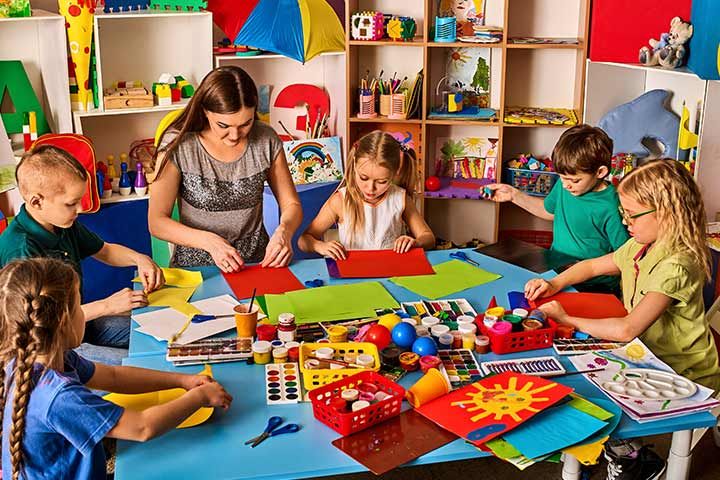As a modern-day Indian parent, you are in a world full of opportunity and complexities. You want your children to excel in academics and, more importantly, you want them to be happy, caring, and confident. Then you see your 5 year old’s wonderful imagination at play and their frustration when a toy does not cooperate. You looked around and wondered to yourself, how can I build my child’s character in a way that embodies our values as a culture but prepares them for a global future?. This is what child personality development is all about. It is not about raising a “perfect” child; it is about creating the correct ground for their own unique character to grow.
This complete guide for you for child personality development is based on years of clinical experience and evidence-based psychological knowledge. We want to serve as a trusted, credible source for your children’s development and benefit you by providing actionable steps to develop a truly well-rounded child.
The Foundation: Why Ages 4-10 Are the Golden Years for Personality Development

The stage of life from 4 to 10 years of age is a time of tremendous growth, not only physical growth, but mental and emotional growth as well. The brain is incredibly malleable as a child at this age, it is often referred to as a window of opportunity for development due to the brain’s ability to change structure, also known as neuroplasticity. The experiences and relationships that your child has at this age, set the wiring for their future.
Think developmental stage of a 5-year-old: curiosity, learning, and social awareness are in full swing! This is a time when they are developing the seeds of resilience, empathy, and creativity. By concentrating on personality development now, you are giving your child a gift that will last forever.
Pillar 1: Nurturing a Resilient Mindset
Resilience is the capacity to recover from downfalls. It does not mean avoiding failure; it means learning how to deal with failure in a brave and hopeful manner. A resilient child will look at a glass of spilled milk, not as a disaster, but as a minor problem they can help to solve.
- How to Foster Resiliency?
Change “Mistakes” to “Lessons”: When your child makes a mistake, try not to scold them. For example, say, “Okay, that didn’t work out, what could we try next time?” This eases the sting of failure and frames it as a normal and important part of learning. - Build Problem-Solving Skills
Resist the urge to solve every problem your child faces. When your child struggles to build a tower with blocks, ask, “Have you tried a bigger block on the bottom?” This encourages them to think critically instead of feeling stuck. - Name, and Allow your Child’s feelings
Teach your child to name their feelings. “I can tell you are feeling really frustrated because your drawing tore.” This is helpful for learning to regulate one’s emotions. See our social emotional learning activities for more ideas on building these skills.
Pillar 2: Fostering a Cooperative Spirit
Cooperation is understanding that there is strength in togetherness. In a society that fosters both anxiety about competition and actual, over-the-top competition, teaching cooperation illustrates to children healthy relationships, socialization, empathy, and being good team players. And this is tied directly to developmentally achieving milestones related to key social moments that occur for school age.
Ways To Encourage Cooperation:
Call chores “contributions for our family”
Use “our family job” instead of “your chore.” Simple acts such as setting the table or watering a plant with intent can indicate acts of working as a team, even if each person completes the task independently.
Modeling empathy and kindness
Children learn by watching you. Your tone of voice, and how you treat your spouse, parents and/or household help can be very powerful absorbers of your modeling.
Using structures play
Many anticipated social activities for children (however varying ages up to nominally 18 years), naturally inculcate teamwork, which is the case for board games. Build a fort together, create a simple dish together. In either case, you are not simply cooperating, you are practicing social relationships.
Pillar 3: Unleashing Boundless Creativity
Creativity is not necessarily being good at art or music. It is a way of thinking, of finding alternative solutions to old problems, a way of self-expression, a way of looking at the world in awe. It is the beating heart of innovation and is a key to a life well lived.
How to Ignite Creativity:
- Arrange “Do Nothing” Time: Boredom is the mother of invention. By being entertained by screens constantly, the child’s inner creative voice can be stifled. It is important to have time allotted for unstructured play.
- Process, not Product: Always praise effort, and not just outcome. Rather than saying “What a beautiful drawing!” try saying “I love the bright colours you chose! Now tell me about what you made.”
- Ask Open-Inended Questions: For example, rather than asking “Did you have fun at school?” ask “What was the most interesting thing that happened today?” This type of question provides room for storytelling and imaginative thinking.
Quick & Easy Social-Emotional Learning (SEL) Activities
Add these fun activities to your weekly schedule, and you will increase their emotional intelligence.
Feelings Charades – Write down different feelings (Happy, Sad, Angry, Surprised), tear off the strips, and roll them up. You will take one, read it in your head, and act it out for your small child to guess what you are acting out. Then switch roles.
The Kindness Jar – Every time someone in the family does something kind or loving, write it on a small piece of paper. Once a week (Sundays work for me), read aloud the acts of kindness from the week.
Storytelling – Ask to tell a short story about a character involved in a problem (the squirrel can’t find its nuts). Stop the story and ask your child “How do you think the squirrel is feeling? What do you think the squirrel could do next?”
Social Milestones for School-Age Children: A Quick Reference
| Age Group | Key Social & Personality Milestones |
|---|---|
| 4-6 Years |
|
| 7-10 Years |
|
The Indian Context: Balancing Tradition with Modernity
Raising a child in India today offers a unique cultural context.
Managing Education Pressure: Education is very important, but make sure you tell your child they are not their marks. Celebrate their efforts, their curiosity, and their character, as much as you celebrate their good marks.
Respect vs. Fear: Respecting your elders is an important value, but we want to teach respect as a function of empathy, and not fear. Teach your child to ask questions respectfully. Never let them just accept something blindly.
The Joint Family Offering: If you are raising your child in a joint family, use that to your advantage. It is a built-in ecosystem that gives your child the opportunity to learn cooperation and sharing, social interactions with distinct ages, and how to work with different personalities. Check out our post on the importance of familial connections for the growth of your children.
Your Journey as a Parent
The process of building your child’s personality is a marathon, not a sprint. There are good and bad days. The key is to be there, be patient, and be intentional. You are building their resilience, cooperation, and creativity, which help to prepare them for success and a happy life. Check out Kinzy Club Blogs for more such helpful articles.
Also do check our Kinzy App to create fun memorable stories through our advanced Ai assistant with your kids.





